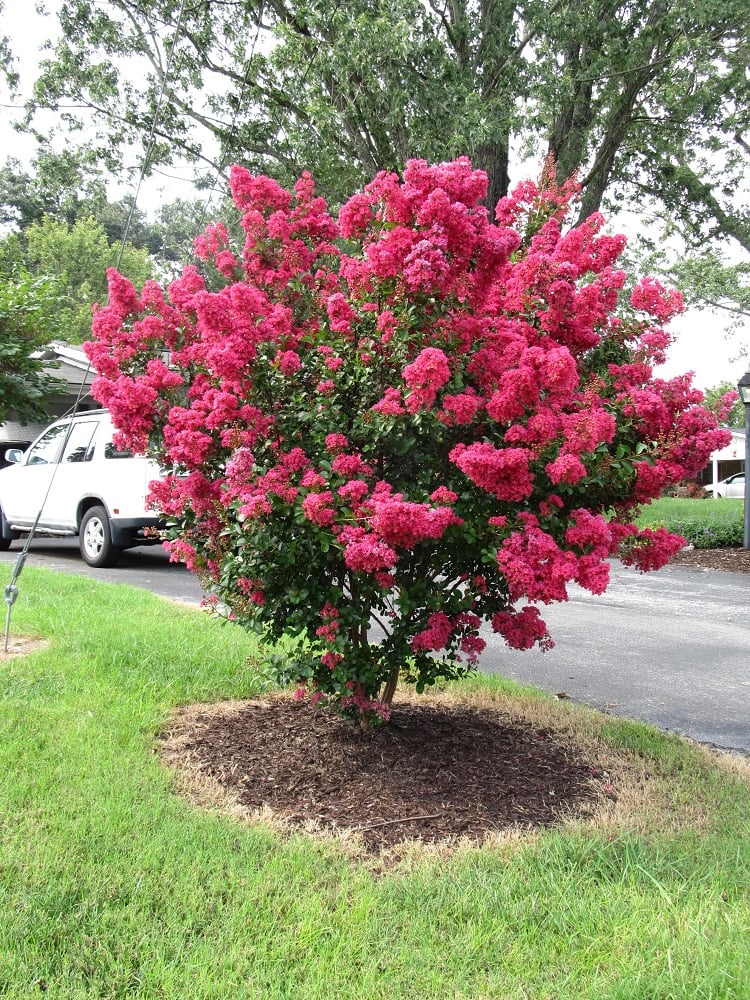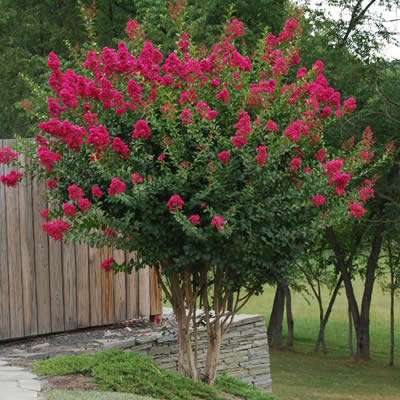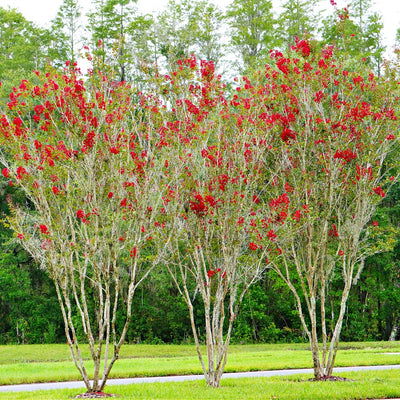Crepe Myrtles Make Excellent Plants For Any Landscape

Crepe Myrtles Make Excellent Plants
Crepe Myrtles have been captivating and attracting people with their luscious, fragrant blooms for centuries now. They are beautiful plants, and Crepe Myrtles are easily cared for and can thrive with longevity. These flowering trees provide various colors and personalities for every season while being highly resilient against disease. Crepe Myrtles can also survive in many climates, from subtropical to domestic settings in commercial landscaping.

Color Variety
Some popular species include the Natchez White Crepe Myrtle and the Red Rocket Crepe Myrtle. However, Crepe Myrtles come in many different colors, such as the Purple Twilight and the Pink Velour Crepe Myrtle. These trees are known for their gorgeous colors, adaptability, low maintenance, and highly drought-resistant qualities.
Growth Patterns of flowering shrubs
Crepe Myrtles are notorious for their ability to grow upwards anywhere between afoot to one-hundred feet tall! Most, however, are maintained to stay small, with multiple bases at the trunk. Flowering throughout many different times of the year, depending on species, Crepe Myrtles can give your land blooms year-round. The longest-lasting bloom goes to the Natchez White Crepe Myrtle, which can reproduce flowers for an average of about one hundred and ten days.

Crepe Myrtles and Soil
Most plants can be pretty picky about the type of soil they are kept in, but not the Crepe Myrtle. As long as the soil is well-drained and lightly fertilized, your Crepe Myrtle will thrive, showing you its appreciation. The Red Rocket Crepe Myrtle, for example, will succeed in even the most dried-up suburban area. Keep in mind that drought will not kill this tree but will reduce the blooms next season.
Best Suited Environment
Although Crepe Myrtles can survive in most climates, keeping your growing zone in mind is wise. Very rough winters can kill these trees, just like a severe drought. These trees can be held in any of the USDA-listed growing zones. However, growing in zones 7 to 9 can be risky because the winters in zone 7 will undoubtedly kill your trees to the ground. Even if this occurs, the bottom portion of the plant may survive. Crepe Myrtles grow back rapidly in the spring. Pink Velour Crepe Myrtles have been known to withstand even the harshest climate changes.

Blooming Season
All Crepe Myrtles usually bloom between late spring and early fall, offering unrivaled beauty and color throughout the year. The hard-to-find (until now) Purple Twilight Crepe Myrtle makes for attractive blooms throughout the year, from fall to spring. This species of the tree offers gorgeous royal hues. In the fall, most Crepe Myrtles do not flower. Although, their leaves can change to deep orange and red during the fall, making for a great festive fall feeling.

